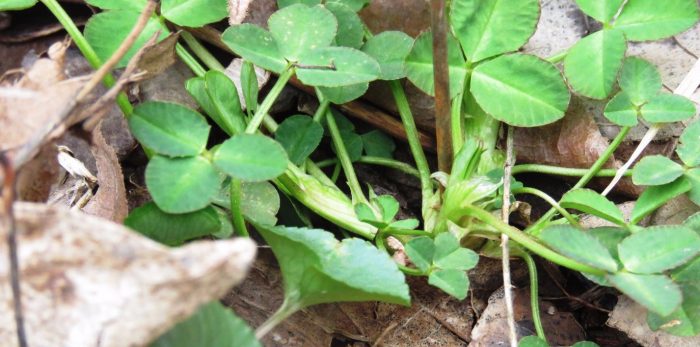The following field report was submitted by PJ Harmon.
West Virginia is home to the world’s largest population of Running Buffalo Clover, a delicate plant that flowers between mid-May and June. This clover, known to botanists as Trifolium stoloniferum, is a federally endangered plant and hard to find.
Once believed to be extinct, patches of Running Buffalo Clover are being monitored in West Virginia. The plant, which has a round flower head and leaves divided into three leaflets, also grows in small patches found in neighboring states.
A Running Buffalo Clover plant. Photo by PJ Harmon.
Here in West Virginia, West Virginia Division of Natural Resources Botanist Paul Harmon and volunteer Pam Byrne recently checked on a population of the plant to see if any were emerging from the warming soils.
In mid-April, Harmon and Byrne counted about 90 “rooted crowns,” the part of the root system from which a stem grows. These crowns were marked with metal pin flags. No flowering stems were seen, but checking the plants at this time allows biologists to estimate when peak bloom will occur so they can get an accurate count of all the populations in West Virginia.
In late May or early June DNR biologists will work with volunteers and cooperating biologists from other state and federal agencies to monitor Running Buffalo Clover populations.
If you are interested in learning more about this species of clover or other endangered species in West Virginia, visit www.wvdnr.gov/wildlife/endangered.shtm or call 304-637-0245.
Endangered species, as defined in the Endangered Species Act, are any species in danger of extinction throughout all or a significant portion of its range. Eleven animals and four plants found in West Virginia are listed as endangered.
Members of the public may help DNR monitor endangered populations by reporting sightings of rare species.

